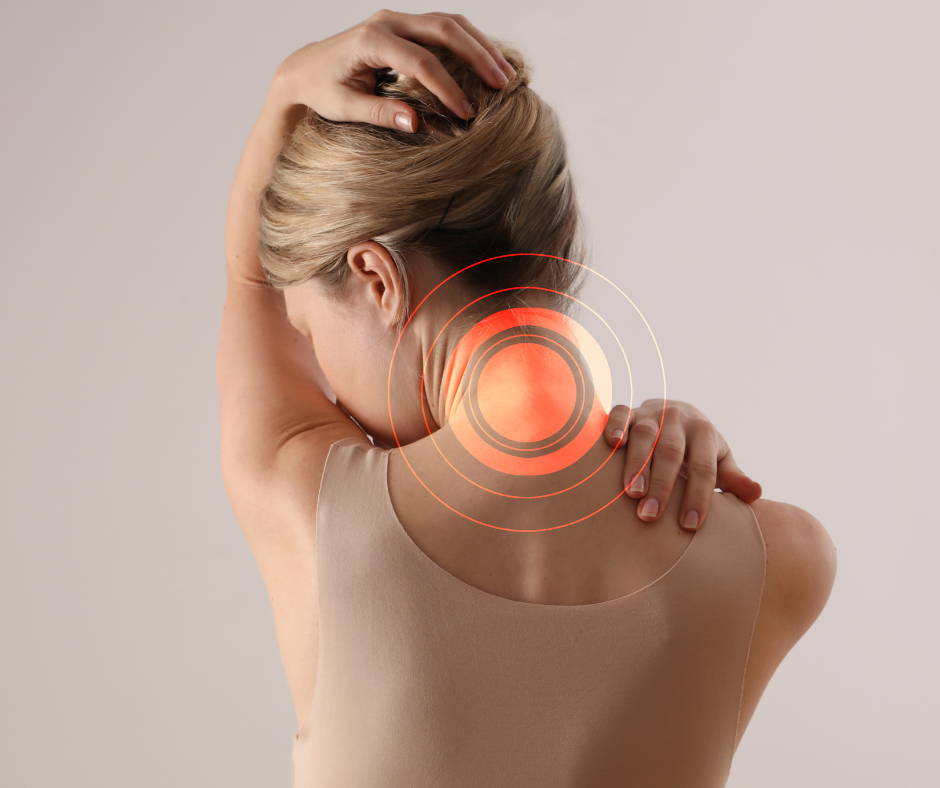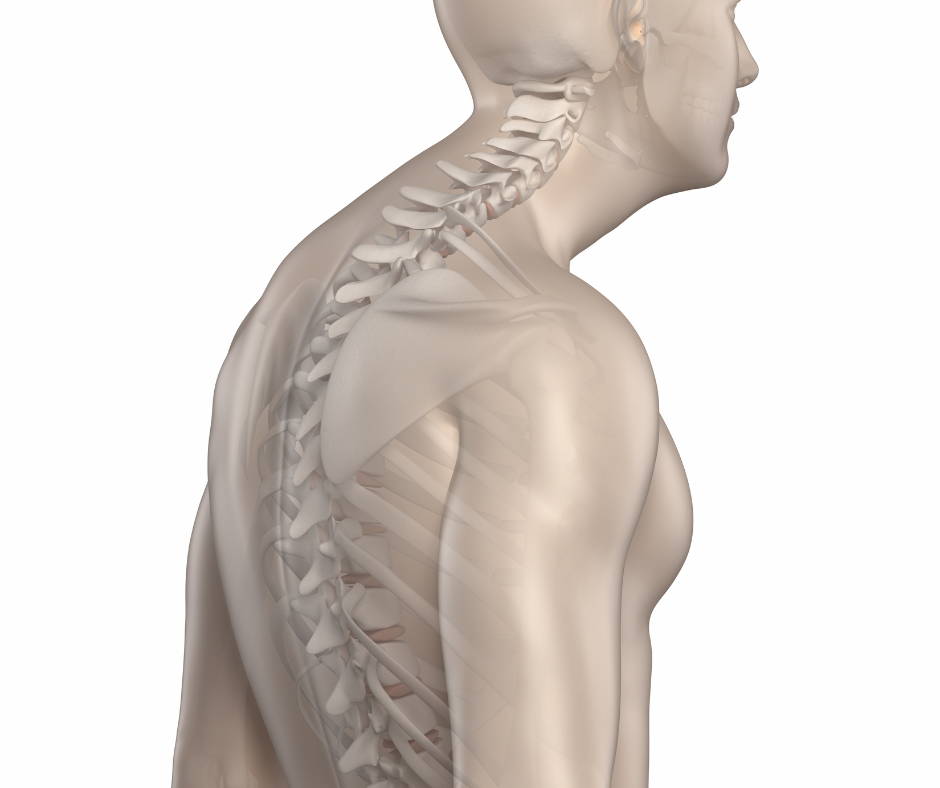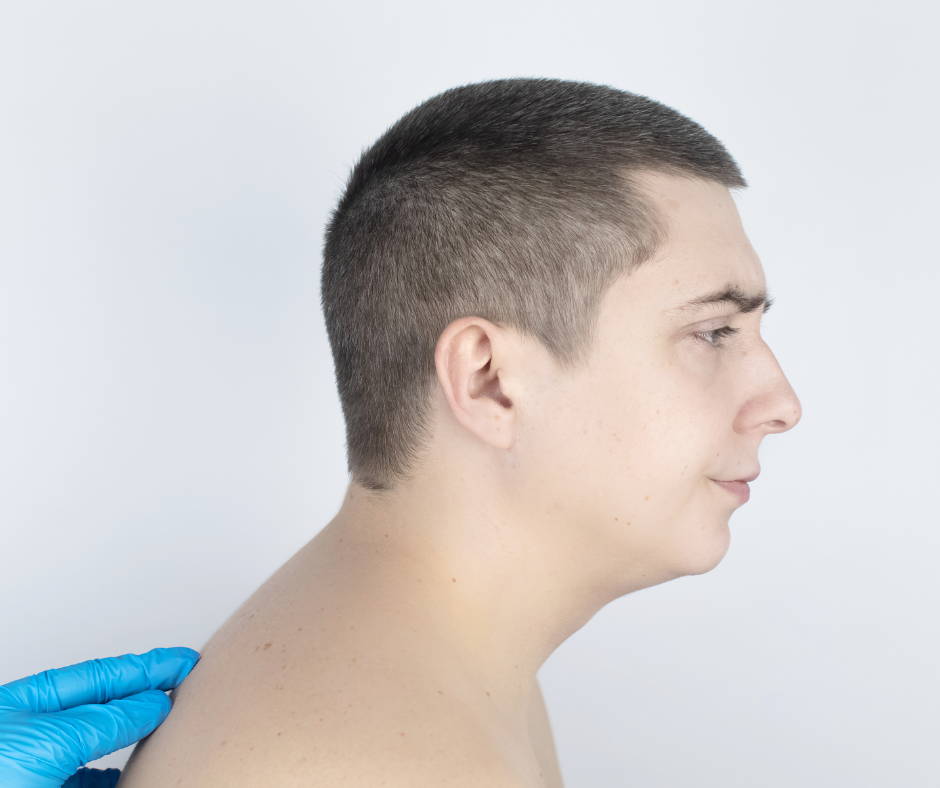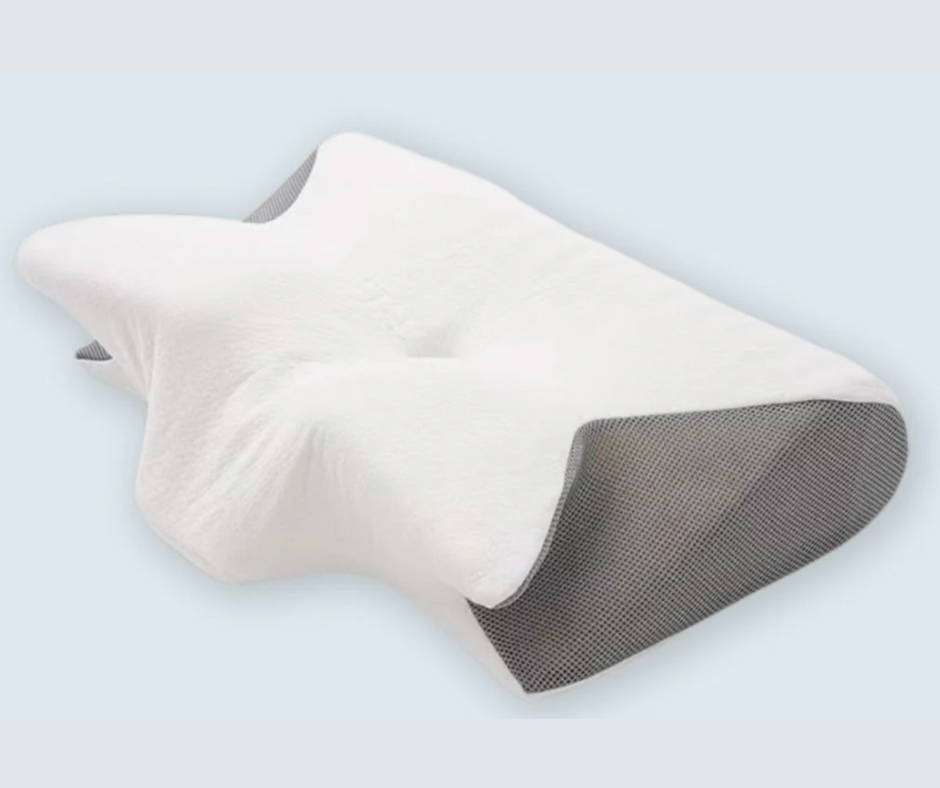Five Expert Tips on How to Get Rid of Dowager's Hump FAST
By Holly Grace Callis | Published on June 16th, 2025

If you've recently noticed a rounded upper back or a slight hump forming at the base of your neck, you might be dealing with the early signs of dowager's hump. The good news? You're not alone, and there are effective ways to address it.
In this blog, we'll explore five expert-approved tips to help you take action quickly, support your spine, and feel more confident in your posture.
What Is Dowager's Hump, and Why Does It Matter?
A dowager's hump is a common term for a forward curve of the upper spine that creates a visible bump at the base of the neck. While it often appears subtly at first, over time, it can lead to noticeable changes in posture, mobility, and comfort. This condition, medically known as kyphosis, affects the thoracic spine and is typically associated with poor posture, forward head position, and weakened back muscles.
In many cases, the hump develops gradually due to daily habits like slouching, sitting with a rounded back, or leaning forward over phones and screens. It can also result from vertebral compression fractures, osteoporosis, or other spinal issues.
Dowager's hump can lead to chronic neck and shoulder pain, reduced spinal flexibility, and a general loss of upright posture. Many people also report feeling self-conscious about the visible hump.
The good news is that early intervention can make a big difference.
Understanding Kyphosis

Dowager's hump is one presentation of a broader spinal condition known askyphosis, which refers to excessive forward curvature of the thoracic spine. This curvature causes a hunched or rounded upper back and can affect people of all ages, though it is most common in older adults and those with certain risk factors.
There are several types of kyphosis. Let's take a look at them:
Postural Kyphosis
Postural kyphosis is the most common and is often caused by prolonged poor posture. It typically begins in adolescence and results from muscle imbalances rather than bone deformities.
Scheuermann's Kyphosis
Scheuermann's kyphosis, by contrast, involves structural changes to the vertebrae and often develops in childhood or adolescence.
Degenerative Kyphosis
Degenerative kyphosis occurs later in life due to wear and tear, often linked to disc degeneration or osteoporosis.
Congenital Kyphosis
Congenital kyphosis is present from birth and is caused by improper formation of the spine in utero.
Risk Factors
Common risk factors include low bone density, vertebral compression fractures, spinal injuries, and long-term physical habits that promote forward head posture. In some cases, kyphosis can also be related to medical conditions like Cushing's syndrome or Scheuermann's disease.
People with dowager's hump often experience symptoms like neck pain, stiffness, fatigue, and a visible hump at the base of the neck. There may also be tension in the shoulder blades, reduced spinal mobility, and general discomfort in the upper back.
Because kyphosis can worsen over time if left unaddressed, it's important to monitor symptoms and seek early intervention. A qualified healthcare provider or physical therapist can help identify the type of kyphosis and recommend an appropriate course of action to support spinal health.
Symptoms to Watch For
Dowager's hump typically begins with subtle symptoms that grow more noticeable over time. One of the first signs is a visible hump at the base of the neck, where the upper spine begins to curve forward.
This can cause the head to lean forward unnaturally, leading to what's known as forward head posture.
Other common symptoms include stiffness or discomfort in the neck and shoulders, tight chest muscles, and a general loss of upright posture. People may feel tension between the shoulder blades, reduced mobility in the thoracic spine, or a persistent feeling of imbalance.
Muscle fatigue in the upper back, mild to moderate neck pain, and soreness after long periods of sitting are also common. These early warning signs are often the result of weakened back muscles and poor postural habits.
Recognizing these symptoms early can help you take the right steps toward improving posture and preventing further spinal curvature.
Diagnosis and When to See a Professional

While some mild cases of dowager's hump can be improved through self-care and exercise, it's important to consult a healthcare provider for a proper diagnosis. A physical therapist or primary care provider will typically begin with a physical examination to assess your posture and spine alignment.
During the exam, you may be asked to bend forward while your spine is observed from the side. This helps measure the degree of spinal curvature and detect any structural abnormalities. Imaging tests such as X-rays, MRIs, or bone density scans may also be ordered to evaluate vertebral shape and rule out compression fractures or underlying medical conditions.
Understanding the cause of the curvature is essential. Postural kyphosis may be treated with exercises and lifestyle changes, while structural kyphosis or conditions like Scheuermann's may require more specific treatment plans.
If you experience severe or persistent neck pain, difficulty breathing, or neurological symptoms like numbness or weakness, you should seek immediate medical attention. Early evaluation ensures you get the right support and avoid complications from untreated spinal curvature.
5 Top Tips on How to Get Rid of Dowager’s Hump FAST
Tip 1: Commit to Targeted Postural Exercises
Correcting a dowager's hump begins with strengthening the muscles that support the upright posture. Postural exercises like chin tucks, scapular squeezes, and thoracic extensions are especially helpful.
Chin tucks help align the head over the spine, reversing forward head posture. Scapular squeezes encourage activation of the muscles between your shoulder blades, helping to pull the shoulders back. Thoracic extensions improve mobility in the upper thoracic spine.
Performing these exercises daily can retrain muscle memory and gradually restore upright alignment. A physical therapist can help tailor a routine specific to your posture needs.
Consistency is key—improvement happens over time, not overnight. These movements not only help you get rid of visible curvature but also promote spinal health and reduce overall neck and shoulder pain.
Tip 2: Use a Cervical Support or Traction Pillow Daily
The right pillow can be a powerful tool in treating dowager's hump. Cervical traction pillows, like the Callixe Thera Pillow, gently stretch and support the cervical spine, relieving pressure and encouraging better alignment.
This type of cervical neck traction device combines light stretching, heat therapy, and vibration to relax tight neck muscles and reduce upper back tension. Used daily for just 15 minutes, it helps combat the effects of bad posture by decompressing the spine and improving circulation.
Pair this with the Mirella Contour Pillow at night to maintain the correct posture while sleeping. Its ergonomic shape supports the base of the neck and helps prevent the head from falling into a slouched position.
Together, these tools provide all-day neck support and reinforce the body's natural alignment.
Tip 3: Strengthen the Upper Back and Core
Muscle strength in the upper back, shoulders, and core plays a critical role in preventing and reversing forward curvature. Without support from these areas, the spine naturally leans forward, creating that familiar hunched appearance.
Incorporate resistance exercises like rows, reverse flys, and bird-dogs to activate your back muscles. Planks and dead bugs are great for engaging the deep core stabilizers that help maintain an upright posture.
Focus on controlled movement and form rather than intensity. A physical therapist or trainer can guide you to ensure your spine is supported throughout each exercise.
Improved muscle balance not only helps get rid of the hump but also protects the spine from further degeneration. Over time, these exercises can help reduce the visible curve, ease neck pain, and support your long-term spinal health.
Tip 4: Stretch Tight Muscles That Pull the Spine Forward
Many people with dowager's hump have tight chest muscles that pull the shoulders forward, exaggerating the curve. Incorporating regular stretching can help rebalance your posture.
Try doorway or pectoral stretches to open up the front of the chest. Gentle yoga poses like the cat-cow and upward dog can also improve flexibility in the thoracic spine. Shoulder rolls and arm circles can help loosen up surrounding tissues and promote mobility.
Stretching helps reverse the effects of slouching and muscle imbalances by giving your spine more room to move. When paired with strengthening exercises, it promotes better body awareness and posture control.
Make stretching a daily habit—especially if you spend hours sitting or working at a desk. Over time, you'll notice less tightness, improved flexibility, and better alignment in the neck and upper back.
Tip 5: Support Bone Health Through Lifestyle & Diet
Because many cases of kyphosis stem from osteoporotic fractures, maintaining bone health is essential. A balanced diet rich in calcium, vitamin D, and protein helps strengthen bones and prevent compression fractures.
Weight-bearing exercises like walking, gentle strength training, and stair climbing also promote bone density. If you're at risk for osteoporosis, a healthcare provider may recommend a bone density scan and appropriate supplements.
Avoid smoking and excessive alcohol, which can weaken bone tissue. Make sure your daily routine includes movement, proper lifting techniques, and lifestyle changes that support posture and spine safety.
Strong bones provide the foundation for spinal alignment. Supporting them with nutrition and regular activity is one of the best ways to prevent or slow the progression of dowager's hump.
Treatment Options Beyond Exercise
While exercises and daily habits are essential, other treatment options may be necessary depending on the severity of the curvature. For moderate cases, physical therapy remains one of the most effective non-invasive approaches. A licensed therapist can create a tailored program to reduce pain and improve mobility.
In cases of Scheuermann's kyphosis or structural deformity, a brace might be recommended, particularly for adolescents in a growth phase. A back brace helps control further curvature and supports the spine as muscles strengthen.
For more severe cases involving chronic pain or breathing issues, surgical intervention may be considered. Procedures like spinal fusion aim to straighten the spine and relieve nerve pressure, though this is usually a last resort.
Other helpful modalities may include massage, acupuncture, or osteopathic treatment to manage muscle tension in the neck and upper back.
Combining conservative methods with support tools like the Thera or Mirella pillows provides a practical, holistic strategy. With consistency, most people see positive changes in both posture and daily pain relief.
Preventing Dowager's Hump from Returning
After making progress with treating dowager's hump, the next challenge is keeping it from coming back. Prevention comes down to a few key lifestyle changes and consistent daily habits.
1.Be mindful of your sitting posture and work setup. Keep screens at eye level, shoulders relaxed, and feet flat on the floor. Use ergonomic chairs when possible. Take posture breaks every 30–45 minutes.
2.Continue with regular postural exercises and mobility work. Even five minutes a day can help maintain alignment. Be conscious of your shoulder blades and head position, especially during prolonged activity.
3.Use supportive tools like a posture-correcting pillow or neck stretcher to reinforce good posture passively throughout the day.
Over time, these small habits help correct muscle imbalances, preserve strength, and protect the spine from future issues. Long-term maintenance is the key to avoiding recurrence.
Final Thoughts: Fast Doesn't Mean Rushed

When it comes to how to get rid of dowager's hump, consistency is more important than speed. True change takes time and repetition, but tools like posture pillows and traction devices can help you stay on track.
By combining good posture, movement, targeted support, and lifestyle changes, you give your body the best chance at long-term recovery and comfort. TheThera Pillow andMirella Contour Pillow from Callixe are simple, practical tools to support this process.
Don't wait to start. With daily attention and the right support, you can protect your spine, reduce pain, and restore confidence in your posture.






